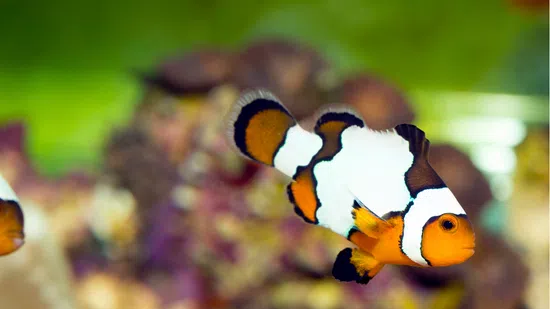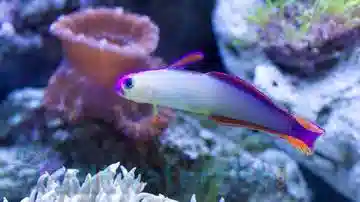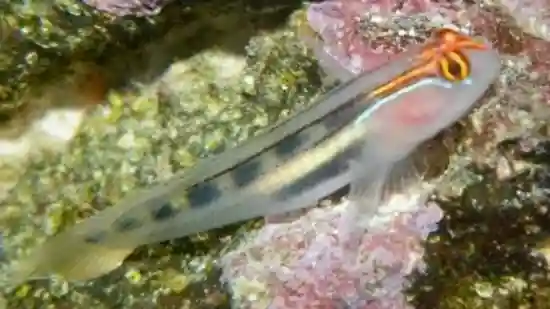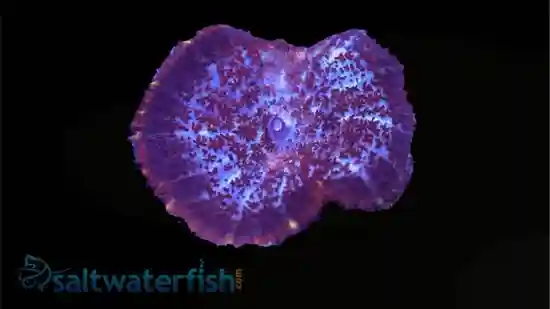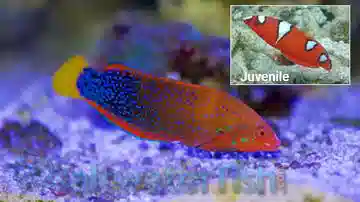Red Coris Wrasse
Coris gaimard
(1 Reviews)
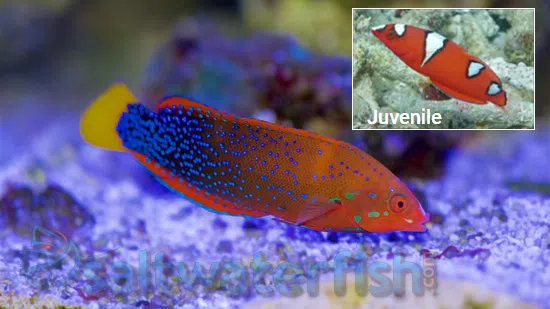
Red Coris Wrasse
Coris gaimard
(1 Reviews)
{{ item.name }}
Size: {{ item.extra_field_3 }}
${{ getFormattedPrice(item.saleprice) }} ${{ getFormattedPrice(item.price) }}
To join the waiting list, click here
Free Shipping
With
$199.00
or more in Marine Life.
More details...
Red Coris Wrasse Care Facts
| Care Level: | Moderate |
|---|---|
| Temperament: | Peaceful |
| Diet: | Carnivore |
| Reef Safe: | No |
| Minimum Tank Size: | 120 Gallons |
| Max Size: | 12 inches |
The Red Coris Wrasse, Coris gaimard, is commonly referred to as the Clown Wrasse, Red Labrid, or Yellowtail Coris. The juvenile and adult appearances vary greatly, where in adulthood, the body takes on a speckled blue coloration, the fins are decorated with yellows, reds, and blues, and the face is orange with green stripes. It prefers a brightly lit tank with plenty of places to hide and swim. Multiple Red Coris Wrasses can be kept together but may fight as they grow. It will occasionally clean the body surface of other fishes, in an attempt to remove parasites and dead tissue but this is usually less common once they reach adulthood. Feed them 2-3 times a day a mixture of frozen thawed brine shrimp, mysis, krill, and other meaty saltwater foods.
Keeping the Red Coris Wrasse (Coris gaimard) in Your Saltwater Aquarium
The Red Coris Wrasse (Coris gaimard) is a vibrant and captivating addition to your saltwater aquarium. In this informative and straightforward product description, we will provide essential information for seasoned hobbyists and those considering the Red Coris Wrasse for their marine tank. We'll cover crucial aspects such as the fish's habitat, reef compatibility, size, lifespan, dietary requirements in captivity, aquaculture availability, compatibility with other marine species, sexual dimorphism, coloration changes from juvenile to adult, temperament, tank requirements, and optimal water conditions For the Red Coris Wrasse. Additionally, we will list common names for this species, suggest suitable tankmates, and explain why purchasing the Red Coris Wrasse from Saltwaterfish.com is a practical choice.
Habitat For the Red Coris Wrasse
The Red Coris Wrasse is native to the Indo-Pacific region, where it thrives in coral reefs and rocky substrates with plenty of crevices and hiding spots. To ensure its well-being in captivity, it's crucial to recreate a similar environment within your aquarium.
Reef Compatibility For the Red Coris Wrasse
The Red Coris Wrasse is not considered reef-safe. These fish are known to disturb corals and may dig in the substrate, potentially causing damage to your reef ecosystem. They best suit fish-only or FOWLR (Fish Only With Live Rock) tanks.
Size and Lifespan For the Red Coris Wrasse
In captivity, Red Coris Wrasses can reach a length of up to 12 inches (30 cm) and have a lifespan averaging between 5 to 7 years.
Diet in Captivity For the Red Coris Wrasse
Red Coris Wrasses are carnivorous and thrive on a diet that includes a variety of high-quality marine pellets, live or frozen seafood, and small crustaceans.
- Frozen Foods: Offer a variety of frozen foods such as brine shrimp, mysis shrimp, and other small, marine-based offerings.
- Dry Foods: High-quality marine-based dry foods, like pellets and flakes, should be included in their diet.
- Live Foods: Occasional live foods like copepods can add variety and meet their nutritional needs.
Aquaculture and Availability For the Red Coris Wrasse
While not commonly aquacultured, Red Coris Wrasses are often available to hobbyists through reputable suppliers and online retailers like Saltwaterfish.com. This helps reduce the pressure on wild populations and ensures a sustainable supply of healthy fish. When purchasing from responsible suppliers like Saltwaterfish.com, you can confidently acquire well-sourced and acclimated specimens.
Compatibility with Other Fish and Invertebrates For the Red Coris Wrasse
Red Coris Wrasses can be territorial and may display aggression towards other fish of similar shape or size. Introducing them to the tank last or providing plenty of hiding spots to minimize aggression is advisable.
Sexual Dimorphism For the Red Coris Wrasse
Male and female Red Coris Wrasses exhibit differences in coloration. Males display more vibrant and striking patterns, while females are often slightly smaller and less colorful.
Juvenile to Adult Coloration Changes For the Red Coris Wrasse
Juvenile Red Coris Wrasses look very different from their adult counterparts. The juvenile and adult appearances vary greatly where in adulthood, the body takes on a speckled blue coloration, the fins are decorated with yellows, reds, and blues, and the face is orange with green stripes.
Temperament For the Red Coris Wrasse
Red Coris Wrasses are known for their territorial and sometimes aggressive nature. They may not be suitable for tanks with timid or smaller fish, and providing plenty of hiding spots to reduce aggression is essential.
Tank Requirements For the Red Coris Wrasse
To ensure the well-being of your Red Coris Wrasse, a tank with a minimum capacity of 120 gallons is recommended. These fish appreciate live rock and ample hiding spots to explore.
Water Conditions For the Red Coris Wrasse
Maintaining stable water conditions is crucial for the health of your Red Coris Wrasse. The following are the recommended water parameters:
- pH: 8.1 to 8.4
- Salinity: 1.020 to 1.025
- Water Temperature: 75 to 82°F (24 to 28°C)
- Water Flow: Moderate, simulating the natural current of their native habitat.
Common Names For the Red Coris Wrasse
The Red Coris Wrasse is also known by various common names, including the Clown Wrasse, Red Labrid, and Red Coris Clown.
Five Compatible Tank Mates For the Red Coris Wrasse
- Yellow Tang (Zebrasoma flavescens): These tangs are known for their peaceful nature and can coexist with the Red Coris Wrasse.
- Maroon Clownfish (Premnas biaculeatus): These clownfish can form a unique and visually appealing partnership with Red Coris Wrasses.
- Royal Gramma (Gramma loreto): These colorful fish are peaceful and add diversity to your aquarium.
- Firefish Goby (Nemateleotris magnifica): Graceful and non-aggressive, these gobies coexist well with Red Coris Wrasses.
- Harlequin Tuskfish (Choerodon fasciatus): These visually striking fish can be suitable tankmates for Red Coris Wrasses.
Why Choose the Red Coris Wrasse from Saltwaterfish.com
Saltwaterfish.com is a reputable source for obtaining marine fish and invertebrates for your aquarium. They are known for their stringent care and quarantine practices, ensuring that the fish they provide are healthy and disease-free. When you purchase a Red Coris Wrasse from Saltwaterfish.com, you can have confidence in the quality of your new marine addition, knowing that it will thrive in your aquarium.
Red Coris Wrasse great addition to 28g Biocube reef tank. Very healthy and active. Add great color to coral tank.
Reviewed by: Les Milston on Dec. 31, 2021


